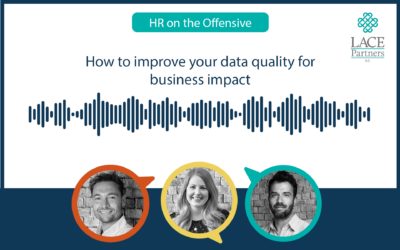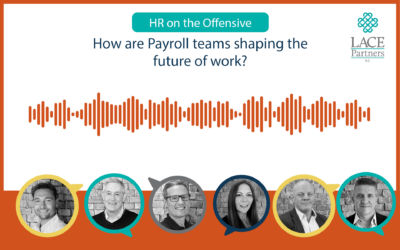In this week’s blog we hear from senior consultant Neil Ilott about how to get the foundations right with your data quality. In any project making sure the data is ready is a crucial – and often overlooked – stage. Read on to learn the core considerations to bear in mind for preparing for an HRIS implementation or any cloud readiness project.
All organisations have a degree of data quality, however low or high it may be. The last few years have led many organisations to ask more of their HR data, putting it into the spotlight when teams are unable to quickly find answers. There has been a growing acknowledgement of the importance of People Analytics in delivering insights to the business as having credible data has become a strategic enabler.
All characteristics of data quality can be boiled down to one key question…Can I trust my HR data? If you aren’t sure, it’s a good idea to do a health check (you can drop us a note if you want to discuss in more detail – just use the form below). When an organisation considers moving towards the implementation of a global HRIS, this is often a pivotal time for evaluating HR data and its governance.
Typically, it has taken on one of two hats;
1. It is a key driver in them adopting a global HRIS, the organisation is aware of key issues in their data quality and intend to use the HRIS to resolve a number of these issues
2. Or more worryingly, it has been forgotten about by the organisation and they have not considered the impact of poor data on the implementation.
In both cases the effort it takes to get HR data from where it is to where it needs to can be immense; but unavoidable. Your HRIS implementation should include reviewing HR data and using the identified pain points to prioritise needs during the roll out and beyond. Understanding your data as it is now will greatly support you in understanding where you need it to be and the roadmap to getting to that hallowed ground where you have full confidence in the data in your system.
Key considerations when planning data quality into a project:
Defined data requirements
There are data characteristics which are required by law and those which are voluntary. All data points in HR can have variations based on locality and personal preference and as such should have controls over how they can be defined. The requirements you have for the data can extend to; how regularly this needs to be updated and reviewed, the format it is captured in, where it is stored, etc. as such data definitions are essential to good data quality. Assessing what data is readily available, and what different levels of effort may be required to acquire different data sets.
Accessibility and consistency
How easy is it for you to generate reports and key data from your different business units and countries? As it currently stands, do you have any form of centralised data repository, or do you have large numbers of local systems which require significant effort to piece together? Accessibility plays a central role in negatively impacting data quality. The consistency of data across the organisation is massively impactful in the overall data quality. Without it, you do not capture the truly global perspective, which can cloud decision making for HR leaders.
Process
What is the process for verifying HR data? All data requires verification if it is being pulled from multiple sources. This verification takes time and effort to perform, however, if it is within a system this should be easier. The process of pulling information also relates to the effort and time HRIS and HRBP’s will need to spend understanding it and generating insights from the data. This can be reduced by establishing a global HR Taxonomy and RACI model to hinge your HR Data from.
Accuracy
When you look at the data you have now, is it accurate? Do the figures we are seeing match up with what we know to be true? If we take headcount as an example; when these reports are pulled we know that the information being reported on is accurate to the state we are currently in. However, if this data is not accurate it’s a huge indication that the overall HR data quality is poor.
Ownership of HR data quality
As we review the data is it clear who is responsible for it? HR data often contains information which may be restricted or controlled by local legislations, as such the ownership over the accuracy is massively important. If your organisation does not have self-service in place then who is responsible for maintaining personal employee data, and how do they know that this is their responsibility?
If you consider moving towards a Global HRIS this can bring a fundamental mindset shift in how you approach HR data. You can facilitate the move to ‘Single Source of Truth’ data principles.
Key takeaways
Get the foundations right – data governance, ownership, and stewardship to drive the behaviours necessary to drive data quality at source and improve data quality over time.
This is worth doing regardless of your broader analytics strategy. But more than anything, be realistic, in what you can achieve with the tools, data and people at your disposal. Start small, experiment and scale … focus on the killer use cases to prove value early and justify more investment. Remember that the most commonly used service delivery technology is reporting and analytics tools, and to get the real value from this you require good data.
If you have questions or need help with your data and analytics please get in touch using the form below – we’d be happy to speak with you.






